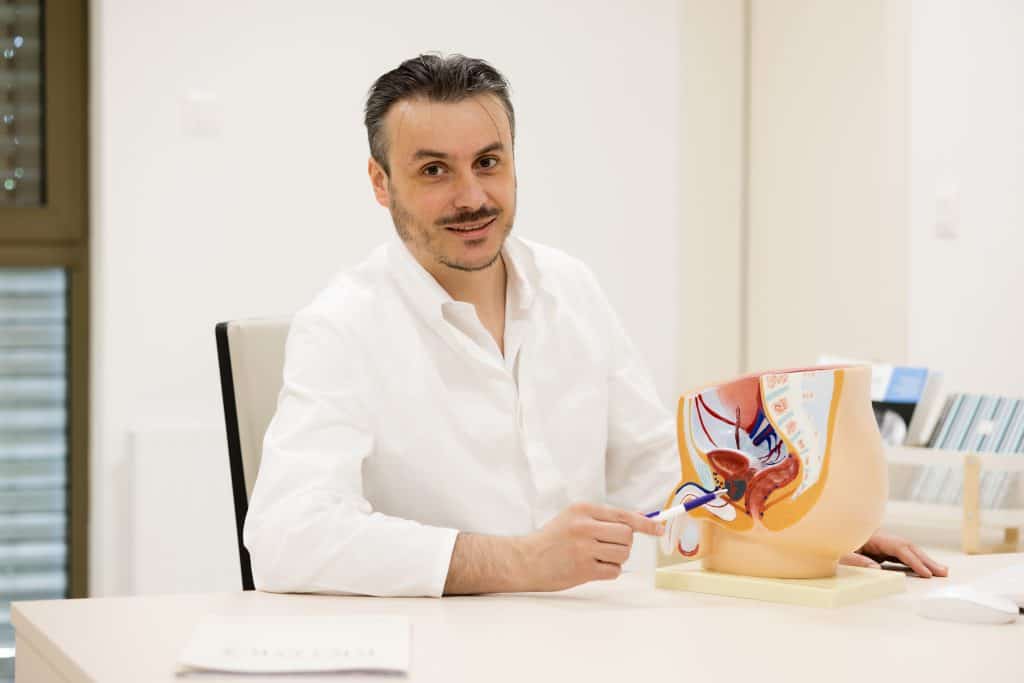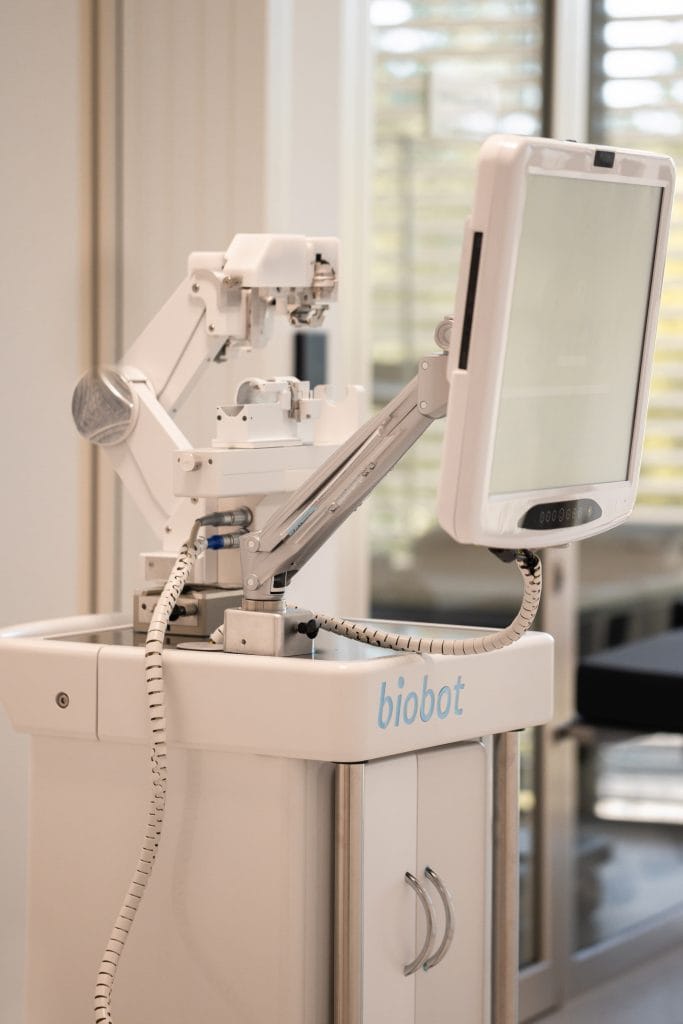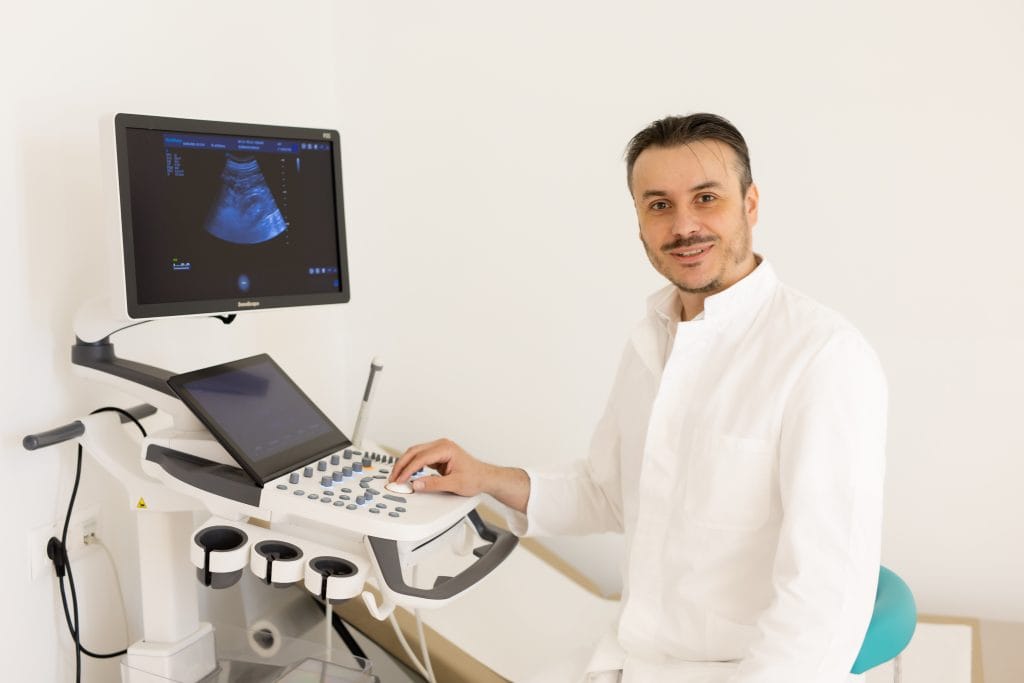Urologist Assoc. Prof. Ivan Radoja, MD, PhD, continues his career at IMC Priora, where his professional focus now includes, among other things, working with the Mona Lisa robotic system
Urologist Ivan Radoja has dedicated his career to the fields of neurourology and urodynamics, receiving further training in, among other places, the United Kingdom and the Czech Republic. He built his career at the University Hospital Centre Osijek, where he worked for fourteen years, then spent a short period at the National Memorial Hospital “Dr. Juraj Njavro” in Vukovar, followed by work in a private clinic. In May, he joined the urology team at the International Medical Center Priora in Čepin.

Da Vinci and Mona Lisa – a rarity in Europe
Thanks to modern technology and robotic systems such as Da Vinci and Mona Lisa, as well as top specialists, IMC Priora has created one of the most advanced urology departments in Europe. The first prostate surgeries in Croatia using the sophisticated Da Vinci Xi robot were performed here in early June 2024. Just as in art, in this hospital, Da Vinci is inseparable from Mona Lisa. At his new position, Dr. Radoja’s current professional focus is prostate biopsies using the Mona Lisa Dx Biobot.
“At Priora, we perform complete urological diagnostics, so we focus on preventive examinations, urinary disorders, benign conditions, early detection of urinary and reproductive system tumors, kidney stones, as well as andrological issues, meaning male sexual dysfunction and infertility. We truly cover a wide range of urological diseases,” explains Dr. Ivan Radoja, specialist in urology and subspecialist in neurourology and urodynamics.
The Mona Lisa Dx Biobot robot places patient safety and surgical precision at the forefront. It is an advanced robotic system that is rare throughout Europe. By combining MRI and real-time ultrasound, it enables fusion biopsies of exceptional precision, in which Priora is a leader in Croatia. But what does this look like in practice?
“Simply put, Mona Lisa uses MRI images of the prostate, on which a radiologist marks suspicious areas, and ultrasound images of the prostate. It overlays them and then accurately determines where to take the biopsy sample. Additionally, Mona Lisa-guided biopsies are not performed through the rectum, but through the perineal skin, which minimizes the risk of urinary tract infection. By comparison, during a transrectal biopsy, the needle passes through the rectum, with a much higher chance of bleeding and infection,” explains Dr. Radoja.

Dr. Ivan Radoja on incontinence
This is, therefore, a less invasive procedure, meaning Mona Lisa ensures faster recovery, and it is performed under general anesthesia – an additional benefit for the patient.
If Mona Lisa confirms cancer, the Da Vinci robot comes into play. It enables minimally invasive surgery and allows surgeons access to narrow anatomical segments. The robot’s arms have remarkable mobility, with a range of motion of up to 540 degrees and millimeter precision. Surgeons follow the procedure on a monitor, in a 3D view, with image magnification of up to ten times. In short, the robot enhances the surgeon’s skills and eliminates the risk of human error.
In terms of diagnostics, Dr. Radoja also points out uroflowmetry, which measures the rate of urine flow through the urethra. A complete urodynamic assessment is also planned, which means detecting lower urinary tract function disorders – an area to which this urologist has dedicated a significant part of his career. Licenses from European and global professional associations confirm his experience and expertise.
Urologists at IMC Priora also address problems caused by urgent urinary incontinence, both pharmacologically and with the help of Botox – something not commonly offered in healthcare facilities in Croatia.
“Botox is applied to the bladder lining in a different concentration than is used for treating facial wrinkles, and it acts on the nerve endings in the bladder wall. This prevents the constant urge to urinate small volumes and increases the functional bladder capacity,” says Dr. Radoja.

Dr. Radoja: Symptoms should be taken seriously
Prevention is essential to avoid more serious urinary system diseases, but unfortunately, many people fear visiting a urologist. Dr. Ivan Radoja earned his PhD with a thesis on “The Impact of the Type and Duration of Urinary Incontinence in Women in Osijek-Baranja County on Their Quality of Life, Sexual Function, and the Incidence of Psychological Disorders.” He found that, on average, women wait seven years from the onset of symptoms before seeking medical attention.
“Urinary incontinence can occur as a result of neurological disease, past urinary tract infections, diabetes, or an elevated body mass index, while erectile dysfunction can, for example, be of cardiovascular origin due to blocked blood vessels at the base of the penis. Symptoms and changes in the urinary system should be taken seriously,” concludes Dr. Radoja.